Brief Overview of the Toyota Land Cruiser FJ60
The 1980s ushered in a new Land Cruiser model: the FJ60. It dominated the 4WD SUV market from the first model in 1981 until 1987, when it was replaced by the FJ62, the J70 (Prado), and the J80 concurrently—all of these newer models borrowed from lessons learned during the 1980s. One, the people loved the station wagon body style of the FJ60 (J80), and two, people enjoyed being comfortable while driving regardless of the body style. Toyota produced over 400,000 60 Series models over its run, and the sales of the FJ60 put Land Cruiser sales over 1,000,000 units.
One thing consistent across all Land Cruiser years is that it is a formidable 4WD vehicle with a history that goes back to the 1950s. The Land Cruiser history tells the story of a car that not only was designed for rough terrain but thrives on it.
Toyota combined its 4WD pedigree with the larger station wagon body. Then, it mixed in some optional comfort features like power steering, AC, and heat to bring the FJ60 into the 1980s while meeting drivers’ growing demands for comfort worldwide.
The FJ60 began its lifespan by being equipped with a 2F engine and a 4-speed transmission. This power combination gave this workhorse off-road dynamics worthy of some of the terrain it has to tackle in places like Australia and Saudi Arabia. Yet, driving the miles and miles that make up the highways of the United States is enjoyable.
History of the Toyota Land Cruiser FJ60
To get to the FJ60, we must return to the FJ40 of the 1960s. Don’t forget that the Land Cruiser itself was only two models (BJ 1951 and 20 Series 1955) and was less than 10 years old from its debut in 1951 to the FJ40.
Prelude to the FJ60 model
The older FJ40 trucks sported the traditional Jeep-style body built for military and farm use. Practical and reliable, this model was the bones for the new FJ60, but Toyota wasn’t looking for practical as much as they were seeking to compete globally with the budding SUV and 4WD market.
FJ40 trucks were never meant for city driving, so Toyota used the truck’s concept and dressed it up for more modern living, like work commutes and sporting practices for the kids. As the new FJ60 was beginning its journey into American showrooms, the interest in off-roading was capturing people’s attention around the U.S.
With the United States’ seemingly endless supply of trails and National Parks, people were in the mood to wander in the 1970s and 1980s after being told to “see the U.S.A. in your Chevrolet” for most of their 1950s youth. The highway system was brand new, and fuel prices settled down after the turbulent pricing of the mid-1970s. The FJ60 showed up just in time to take them to some of the most remote wilderness trails and highest peaks imaginable in a comfortable vehicle with plenty of room for their gear, kids, dogs, and toys.
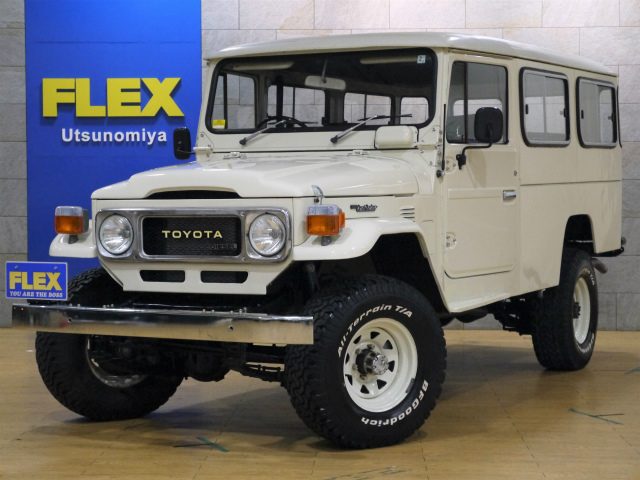
Milestones
During the production years 1981 until 1987, there were many milestones during this short period. Keeping its off-road characteristics at the forefront, the 60 Series intended to compete internationally in the new SUV market. It kept the 2F gas engine from the 40 Series but gained the 4.0L (2H) and the 3.4L (3B) diesel engines in the lineup to meet the demands of a global and diversified market.
- In 1981, over 1 million total Land Cruisers had been sold, and Toyota introduced the high-roof version. In South Africa, a stock FJ60 competed in the Toyota 1000 km Desert Race held in Botswana.
- 1982 gave owners the option to select a 5-speed gearbox in the 1982 models.
- 1984 saw the last FJ40 and the introduction of the 70 Series (Prado).
- 1985 Toyota introduced the 12H-T direct-injection turbo diesel engine into the FJ60.
- 1987 produced the last FJ60.
- 1988 introduced the FJ62 and an upgrade from the 2F to the 3F-E EFI and an available 3F. The FJ62 was created for the Japanese marketplace, where it could be sold as a passenger car with the new 3F motors installed.
- 1990, production of the 60 Series ended.
The FJ60 is the first Land Cruiser to have trim levels: STD, GX, and VX. The HJ61 is a diesel model that did not get to the United States but is very popular in other locations around the globe.
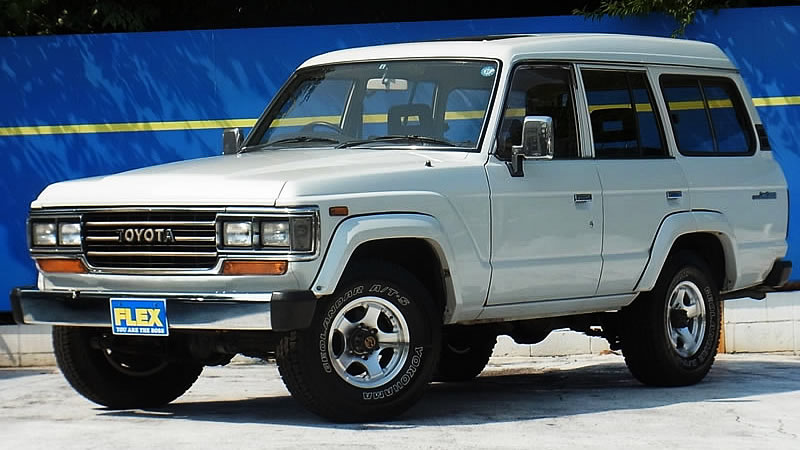
Design and Features
Regarding design, Toyota falls back on practical features like the sturdy, rugged engine builds that helped solidify their position on the reliability scale. Even with more creature comforts in the FJ60, the foundation remains the same as the first Land Cruiser.
Exterior design
The first thing you might notice about the FJ60 design is the station wagon body, which has a seating capacity of 5 to 7 people. If you grew up in the 1950s in the United States, you might think of a station wagon as a long, low car with kids in the back heading out on vacation, but when Toyota thinks of a station wagon, they have the SUV body style in mind. This is the same shape as what is still found in SUVs today, although they are less boxy today than the original FJ60.
Compared to previous models like the FJ40, the JF60 has a more rounded appearance, even while maintaining its square shape. It looked less likely to aggressively tackle the outback and more capable of highway passing than the familiar stance of the FJ40. However, the FJ60 never lost its off-road hunger and is equipped with full-time 4WD.
Built on a ladder frame leftover from the FJ55, the FJ60 has front and rear leaf springs and a solid axle. Unfortunately, the rear has a bit of an overhang that can interfere with the departure angle, and it only has 7.5 inches of ground clearance. Nothing that a lift kit can’t fix, though.
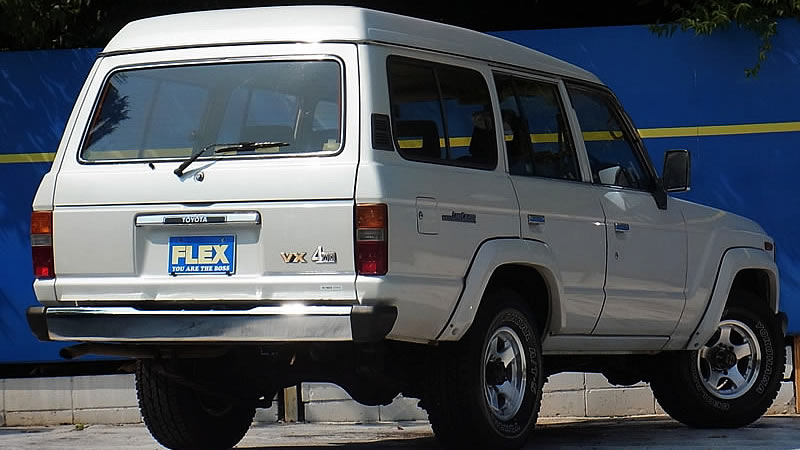
Interior features
In addition to the AC and power steering, Toyota made the interior comfortable with full upholstery and a less military look to the dash and doors. Gone are the metal interior doors, replaced by door panels with padded inserts, and the dash has a “padded” appearance as opposed to metal. It looks dated by today’s standards, but it was state-of-the-art comfort in its time.
For the most part, the FJ60 stayed the same until 1988, when the FJ62 arrived with its square headlights and new engine update and carried the 60 Series torch further. In 1988, there were also options like power windows, locks, and automatic transmission. The 60 Series was beginning to look and feel more and more like a cruiser and less like an off-roader, but don’t be fooled; the FJ62 3F engine is capable of 220 ft-lb of torque and 155 horses.
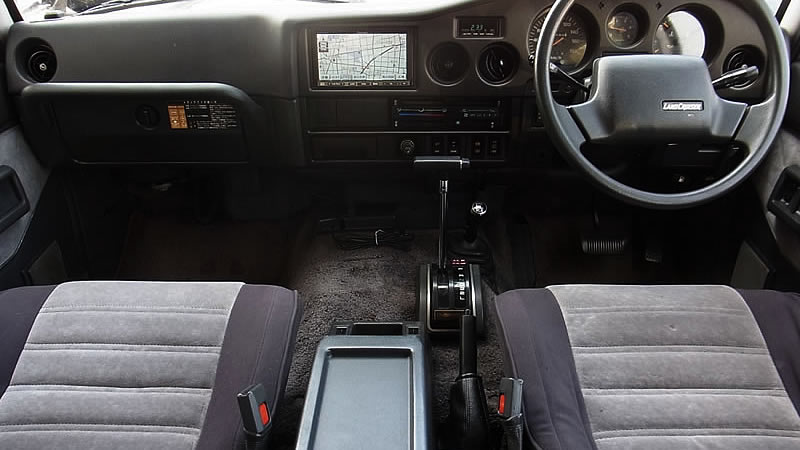
Off-Road Capabilities
If you bought an FJ60, you bought it partly because it promised an off-road experience of a lifetime, so let’s look at the power behind this trail climber.
Engine Specs
With seven engines and three transmissions, choosing the one for you is a matter of asking yourself, “How will I drive this vehicle?” Here are some engine specs to help you make your decision.
| Engine – Gas | 2F 4.2L I6 |
|---|---|
| Transmission | 4-speed Manual |
| Horsepower | 140 @ 3,600 RPM |
| Torque | 200 lb-ft @ 1,800 RPM |
| Drive System | 4WD |
| Tow Rating | 3,500 |
| Engine – Gas | 3F 4.0L I6 |
|---|---|
| Transmission | 5-speed Manual |
| Horsepower | 155 @ 4,200 RPM |
| Torque | 220 lb-ft @ 2,200 RPM |
| Drive System | 4WD |
| Tow Rating | 3,500 |
| Engine – Gas | 3F-E 4.0L I6 |
|---|---|
| Transmission | 4-speed Automatic |
| Horsepower | 155 @ 4,200 RPM |
| Torque | 220 lb-ft @ 2,200 RPM |
| Drive System | 4WD |
| Tow Rating | 3,500 |
| Engine – Diesel | 3B 3.4L I4 |
|---|---|
| Transmission | 4-speed Manual |
| Horsepower | 90 @ 3,500 RPM |
| Torque | 160 lb-ft @ 2,200 RPM |
| Drive System | 4WD |
| Tow Rating | 3,500 |
| Engine – Diesel | 2H 4.0L I6 |
|---|---|
| Transmission | 4-Speed Automatic |
| Horsepower | 105 @ 3,500 RPM |
| Torque | 177 lb-ft @ 2,000 RPM |
| Drive System | 4WD |
| Tow Rating | 3,500 |
| Engine – Diesel | 12H-T 4.0L Turbo I6 |
|---|---|
| Transmission | 5-speed Manual |
| Horsepower | 134 @ 3,500 RPM |
| Torque | 232 lb-ft @ 1,800 RPM |
| Drive System | 4WD |
| Tow Rating | 3,500 |
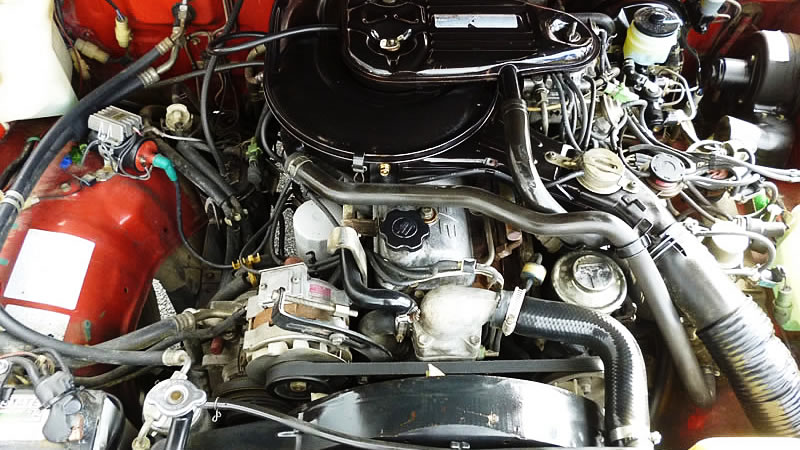
Performance and Driving Experience
FLEX Automotive is the leading Land Cruiser dealership in Japan, and we have performed extensive performance and drivability tests on all Land Cruisers over the years. Here is their assessment of the FJ60’s performance:
The FJ60 has a wider stance that improves handling and stability, and this stance doesn’t appear to be affected by passenger distribution or load capacity, giving it the solidity needed on and off the road.
While suspension plays its part, the power under the hood influences the performance more than the springs under the body. The FLEX Automotive team found better performance from the diesel 2H and the 12H-T than the 3B motor since the torque and acceleration play a bigger part in the handling decision.
The early gas-powered 2F had an almost diesel-like torque to it that made it a better gas performer than the subsequent 3F and the 3F-E, which have exhaust restrictions built into them that hamper the torque and horsepower; however, the 3F and the 3F-E handle better on the road and are more fuel efficient.
Collectability and Market Value
Since collectors find the FJ60 a popular choice, the average price on the market is in the $30,000 range.
In 2017, Autoweek noted that the FJ60 had transitioned from what once was almost a cult-like following from buyers in California to a more mainstream vehicle with collectors. The one thing to consider is that the supply of FJ60s in the United States may be dwindling. Many of the Midwest cars succumbed to rust from road salt, and the coastal states saw their FJ60 eaten up by the salt in sea spray.
Toyota’s FJ60 enjoys a robust aftermarket community, so it’s easy for owners and collectors to modify or replace old parts, which boosts its marketability. The collector market has seen steady growth from the $15,000 range to a more stable $30,000 range. It remains to be seen whether the slow growth will continue or if collectors will turn to another Land Cruiser model.
Image Gallery
Here are some FJ60s throughout the years:
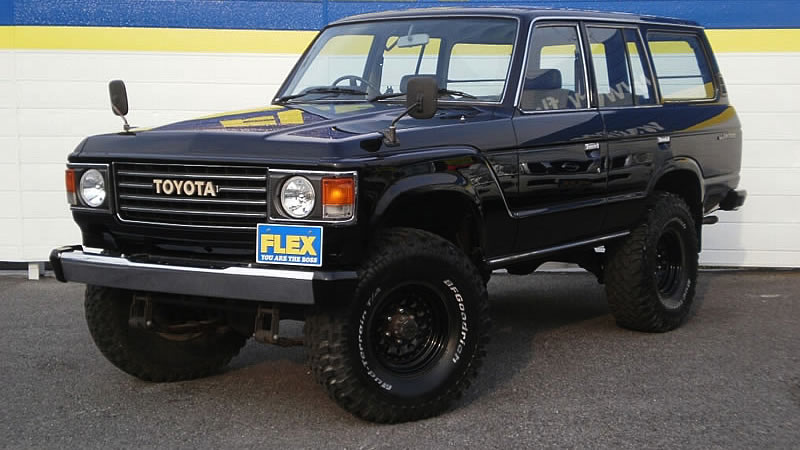
1980 Land Cruiser / FJ 60 at FLEX in Japan
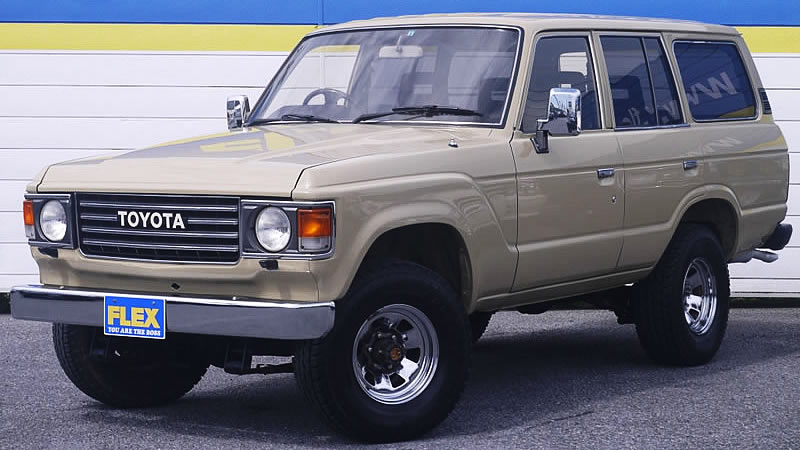
1981 Land Cruiser / FJ 60 at FLEX in Japan
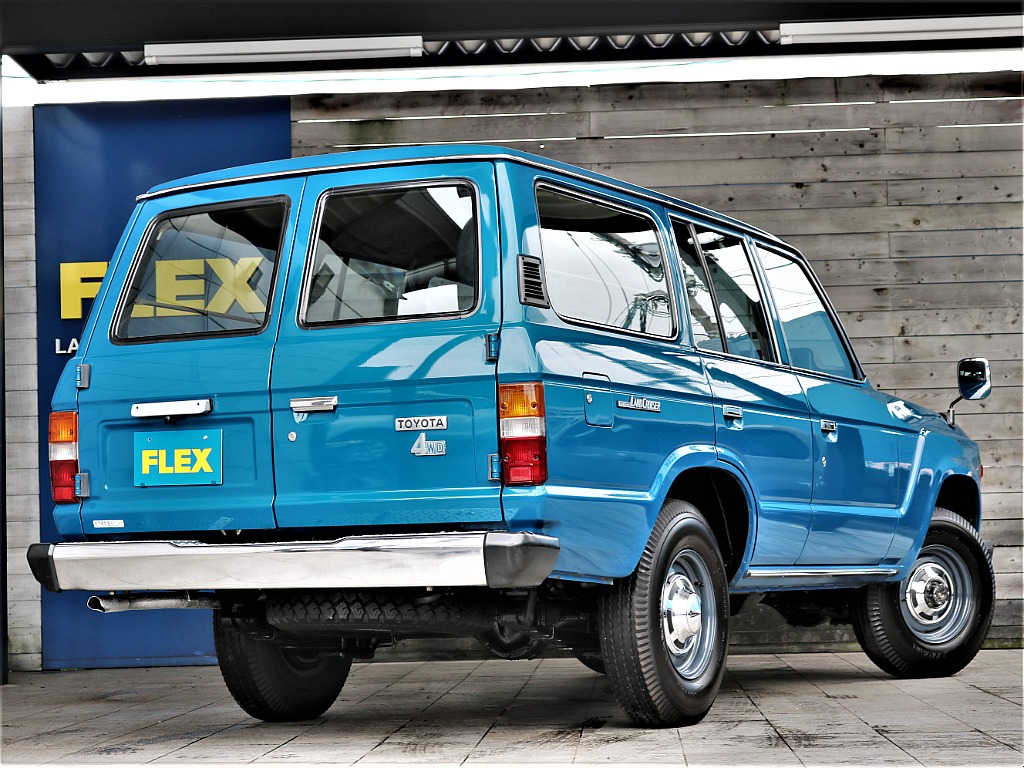
1981 Land Cruiser / FJ 60 with double doors
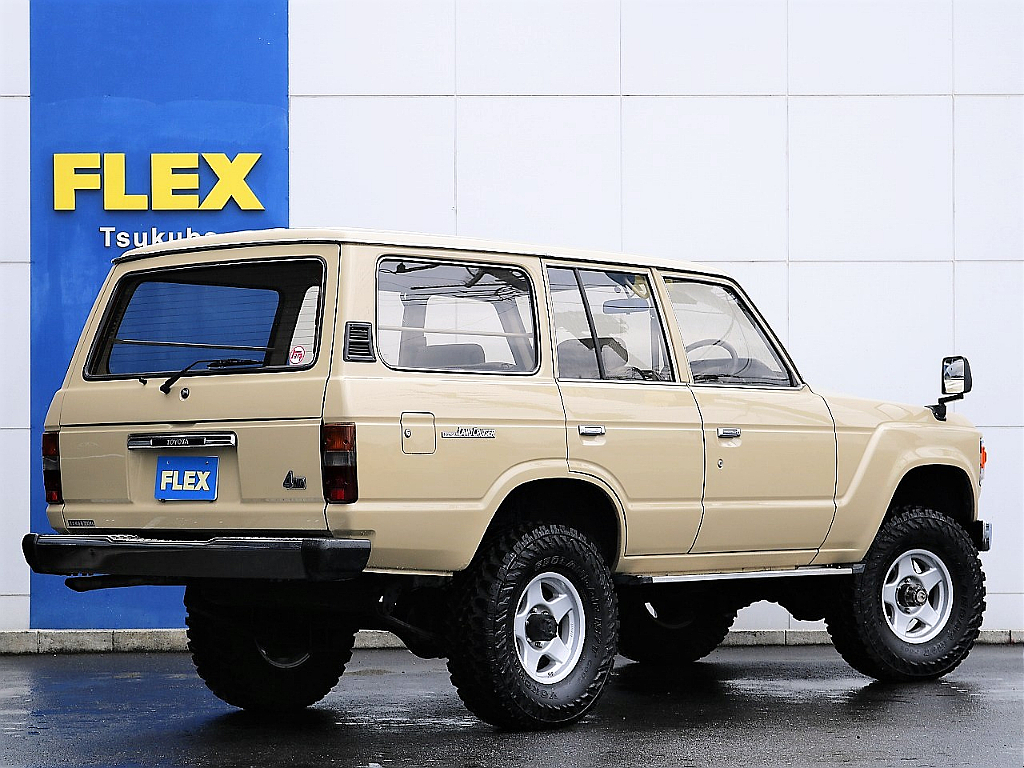
1981 Land Cruiser / FJ 60 with single door
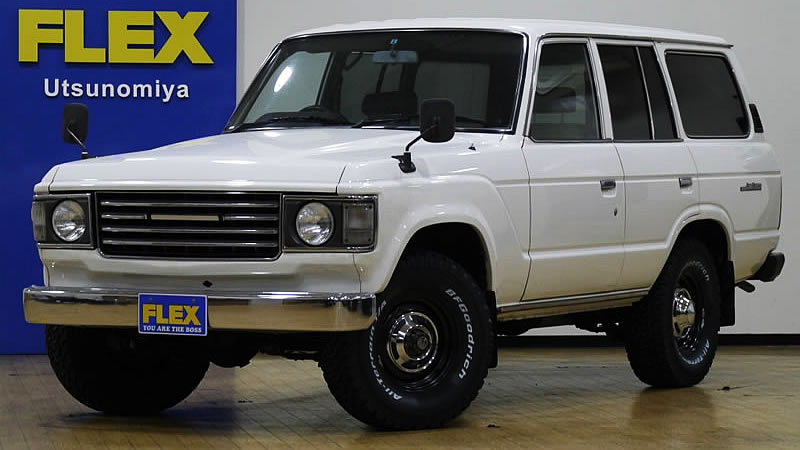
1982 Land Cruiser / FJ 60
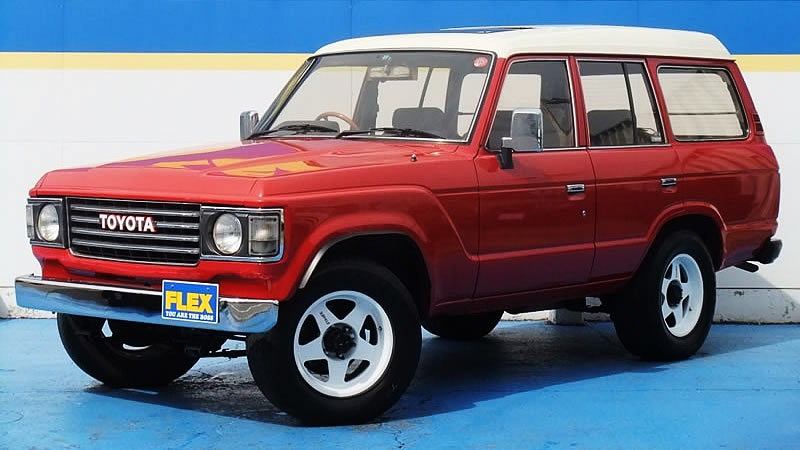
1984 Land Cruiser / FJ 60
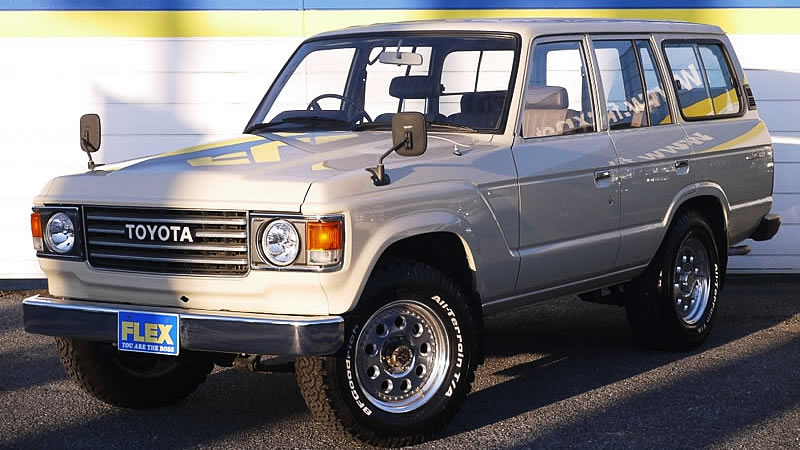
1985 Land Cruiser / FJ 60
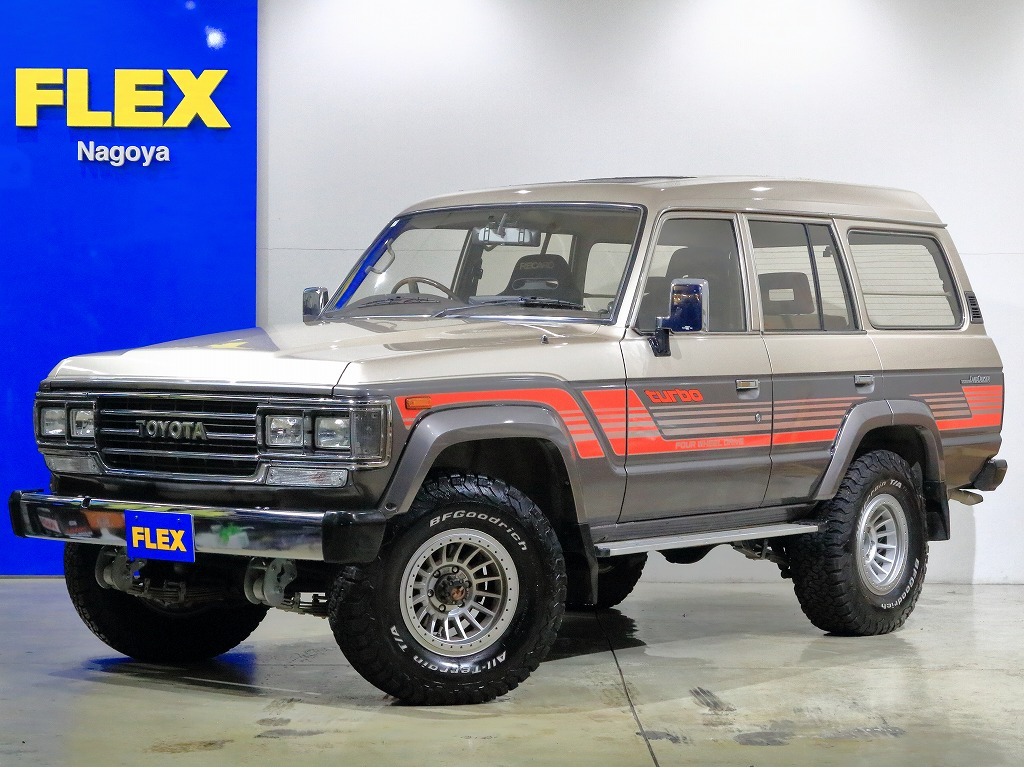
1987 Land Cruiser / FJ 60
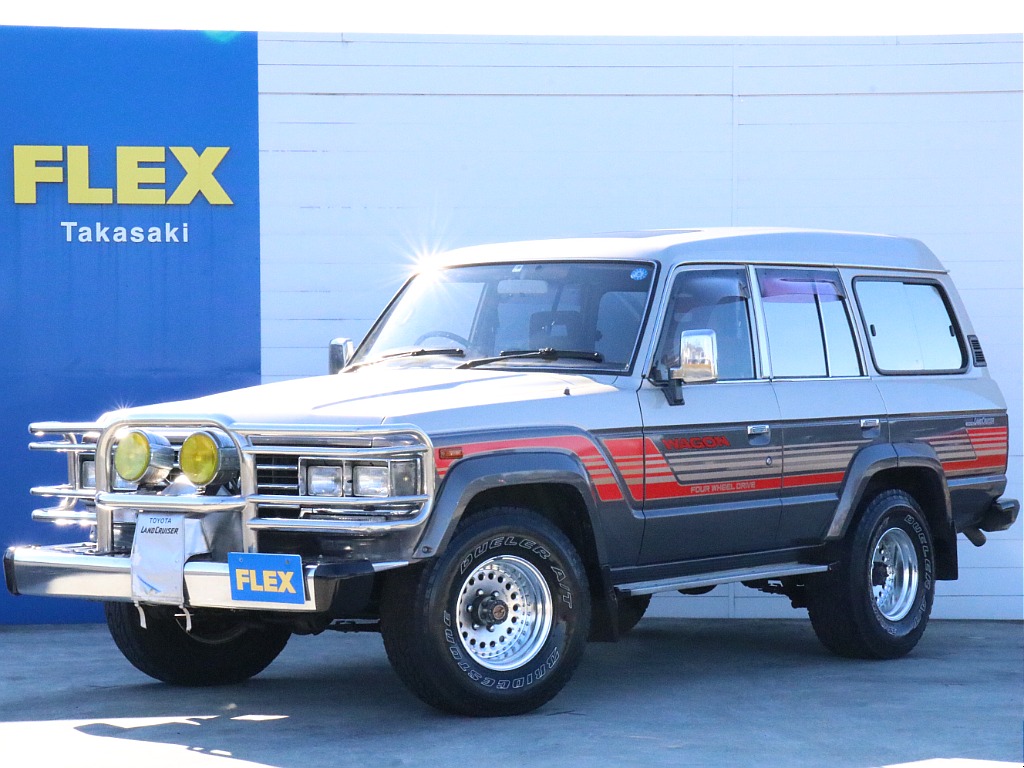
1988 Land Cruiser / FJ 60
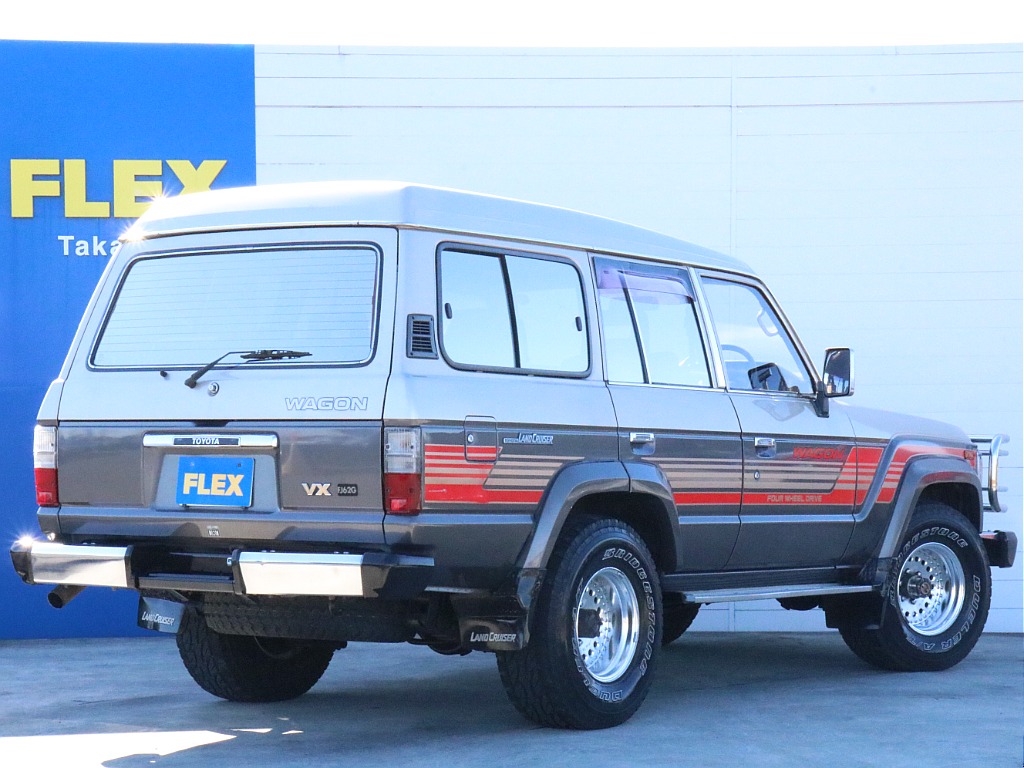
1988 Land Cruiser / FJ 60 – rear
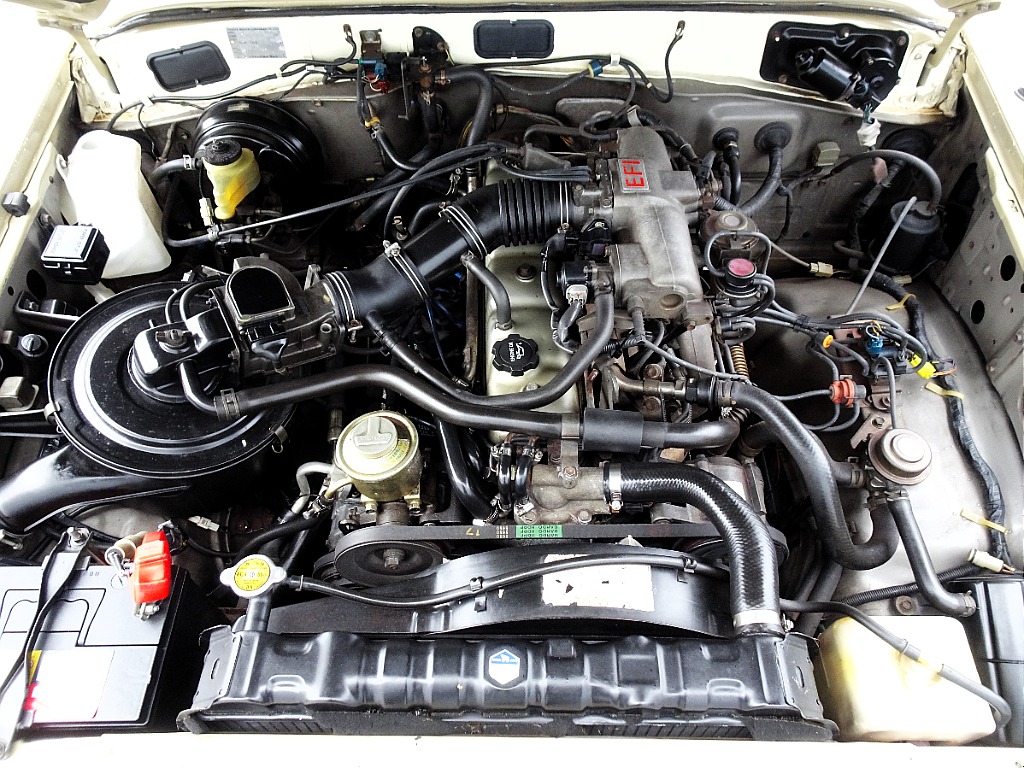
3F-E engine installed in 1988 Land Cruiser / FJ 60
Maintenance
Like all vehicles, maintenance is the key to getting the most from your Land Cruiser. Some models have been known to have over 400,000 miles on them, and the 2F engine is fantastic for accumulating these types of mileage.
Recommended Maintenance and Common Issues
The regular maintenance schedule for the FJ60 is the same as any other Toyota Land Cruiser.
Here are the basics:
10,000 miles or 12 months
- Change the oil and oil filter
15,000 miles or 18 months
- Inspect brakes and brake components
- Check the valves
- Inspect steering linkage and ball joints
- Check lines and hoses
20,000 or 20 months
- Change the oil and oil filter
30,000 or 36 months
- Check the valves
- Inspect the belts and hoses
- Change the oil
- Inspect the exhaust
- Replace the air filter
- Check fuel lines
- Replace spark plugs
- Inspect the brakes
- Replace the wheel bearings and grease – if in water, grease immediately afterward.
- Replace the steering knuckle and grease – if in water, grease immediately afterward.
- Replace the propeller shaft and grease – if in water, grease immediately afterward.
- Inspect the transmission and 4WD
- Inspect all the nuts and bolts on the body
- Inspect the drive belt and change it if necessary
Repeat the maintenance schedule every 5,000/10,000 miles. If you drive your Land Cruiser hard, then you may need to do more inspections and replacements than normally scheduled.
In addition, here are some parts and their replacement intervals:
- Oxygen Sensor – 80,000
- Drive Belt – 60,000
- Engine Coolant – 60,000
Some common issues when buying a used FJ60 include the carburetor needing to be rebuilt, vacuum hoses being loose, axle sludge from bad seals, steering issues from lifts, engine compression being low, and overall body rusting.
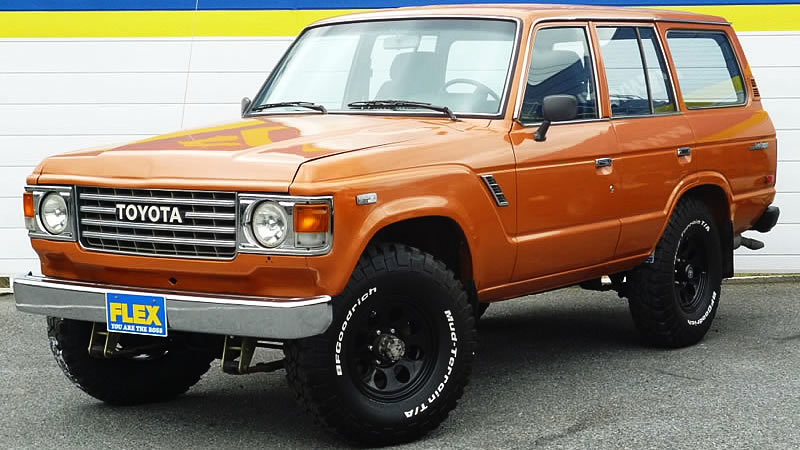
FJ60 Parts and Accessories Sources
If you’re interested in upgrading your FJ60 or looking for replacement parts, some of the best places to shop include the following:
FJ Parts
From idle gears to PCV valves to starters to distributors, you’ll find replacement parts for your FJ60. FJ Parts is located in California and is dedicated to helping you keep your FJ60 running.
CruiserParts
Body parts like doors, panels, glass, rockers, and quarters are all here. They carry lifts, U-bolt kits, fender flares, and snorkels. If you’re in the market to do some modifications, CruiserParts is a good place to start. They carry manufacturers like ARB, Detroit Locker, Genuine Toyota, Old Man Emu, and more.
Other places to check for parts and accessories or recommendations include any online forums dedicated to 4WD, like IH8MUD.
Do you know Renoca?
You’ll only find Renoca vehicles at FLEX Automotive, Japan’s largest Land Cruiser dealership, which now has a branch in San Diego, California.
Renoca Concept
At FLEX Automotive, we have created a line of Toyotas they call Renoca vehicles, which is short for “renovation car.” These vehicles are retrofitted Toyotas using specialized body kits with upgrade options. Here are some of their latest projects:
106
You get the classic look of the FJ60in the modern body of the LC100 in the 106. The 106 is stocked with a V8 and a 4AT capable of 235 HP and 311 lb-ft of torque. You can choose from various colors and upgrades like tires, rims, lift kits, premium seats, and the latest technology, such as backup cameras, Android Auto, ApplePlay, and more.
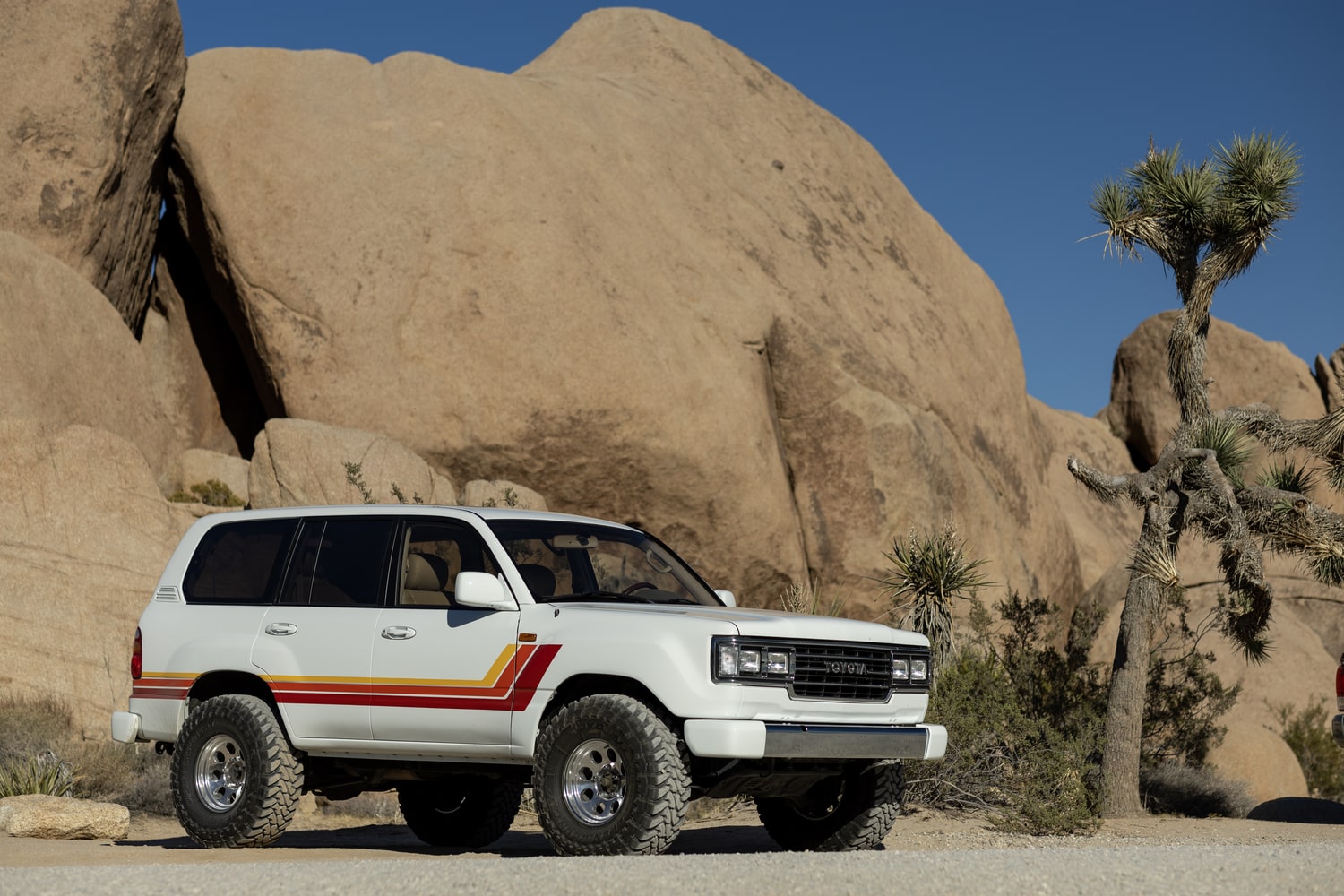
Wonder
The Wonder began life as an 80 Series before being retrofitted with a custom body that brought back the look of the FJ60. This model is capable of 212 HP and 274 lb-ft of torque from an inline-6 with a 4AT. Like the 106, other upgrades are available.
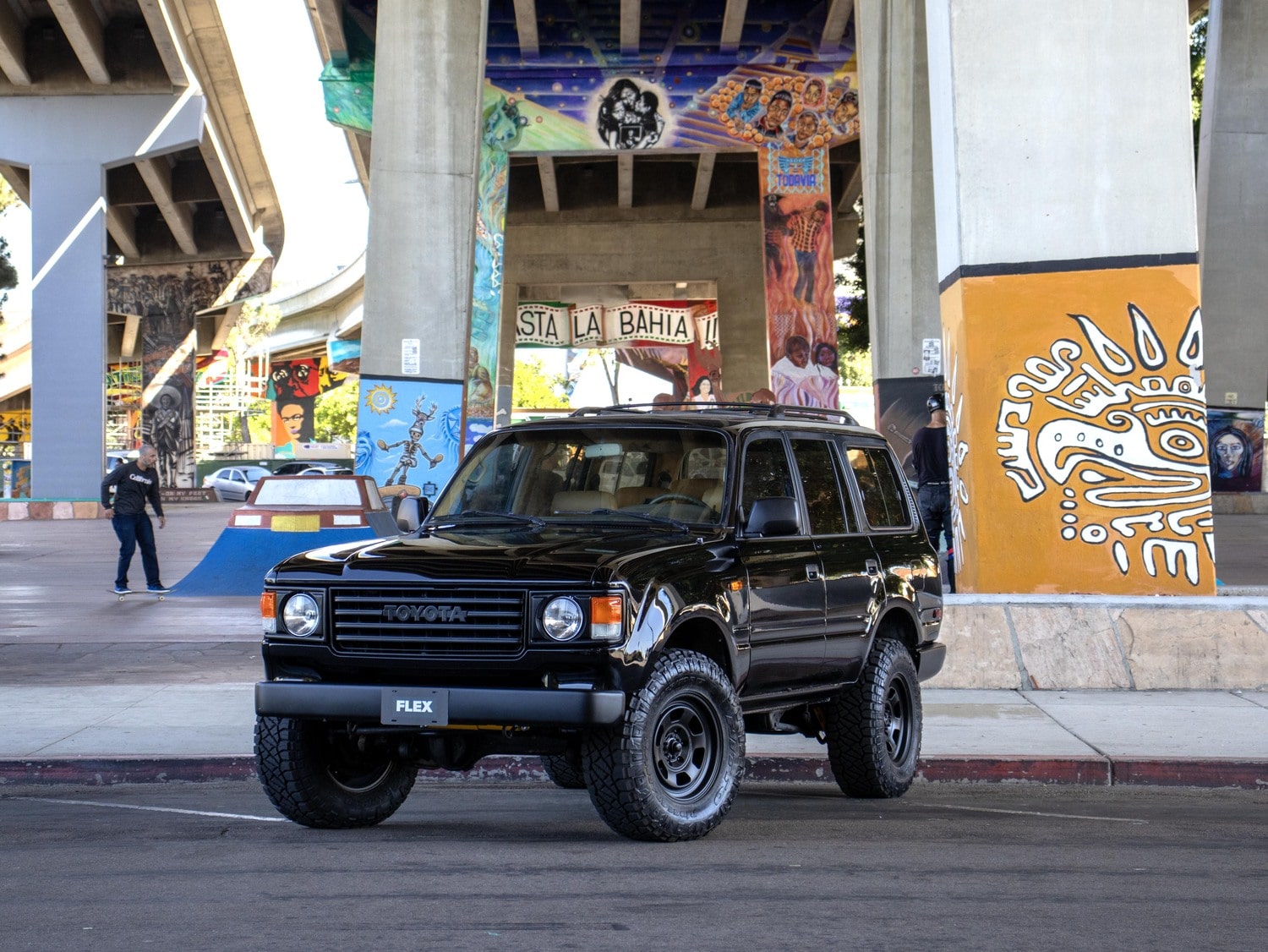
Phoenix
Another 80 Series transformation is the Phoenix. Stocked with an inline 6, this model produces 215 HP and 274 lb-ft of torque and comes with a 4AT. As before, you’ll find a variety of upgrades, colors, and other options for this model.
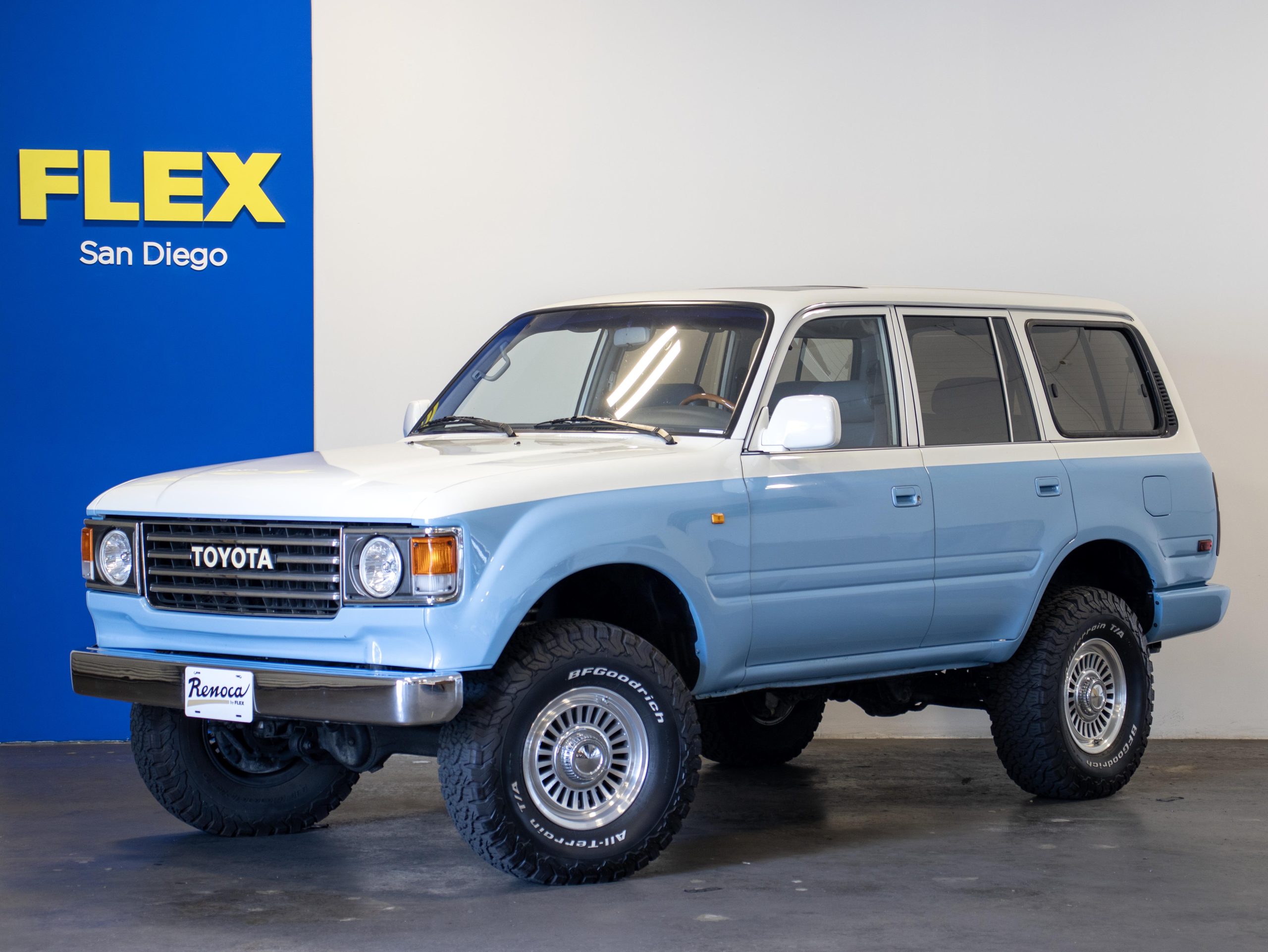
Windansea
The Tacoma is the base for Windansesa, which combines the rugged truck with a body that accentuates the natural lines of the Tacoma. From there, it is equipped with a boxier-style grille and front end drawn from past Toyotas, and it is fortified with a steel bumper and under guard. This is a U.S.-exclusive truck.
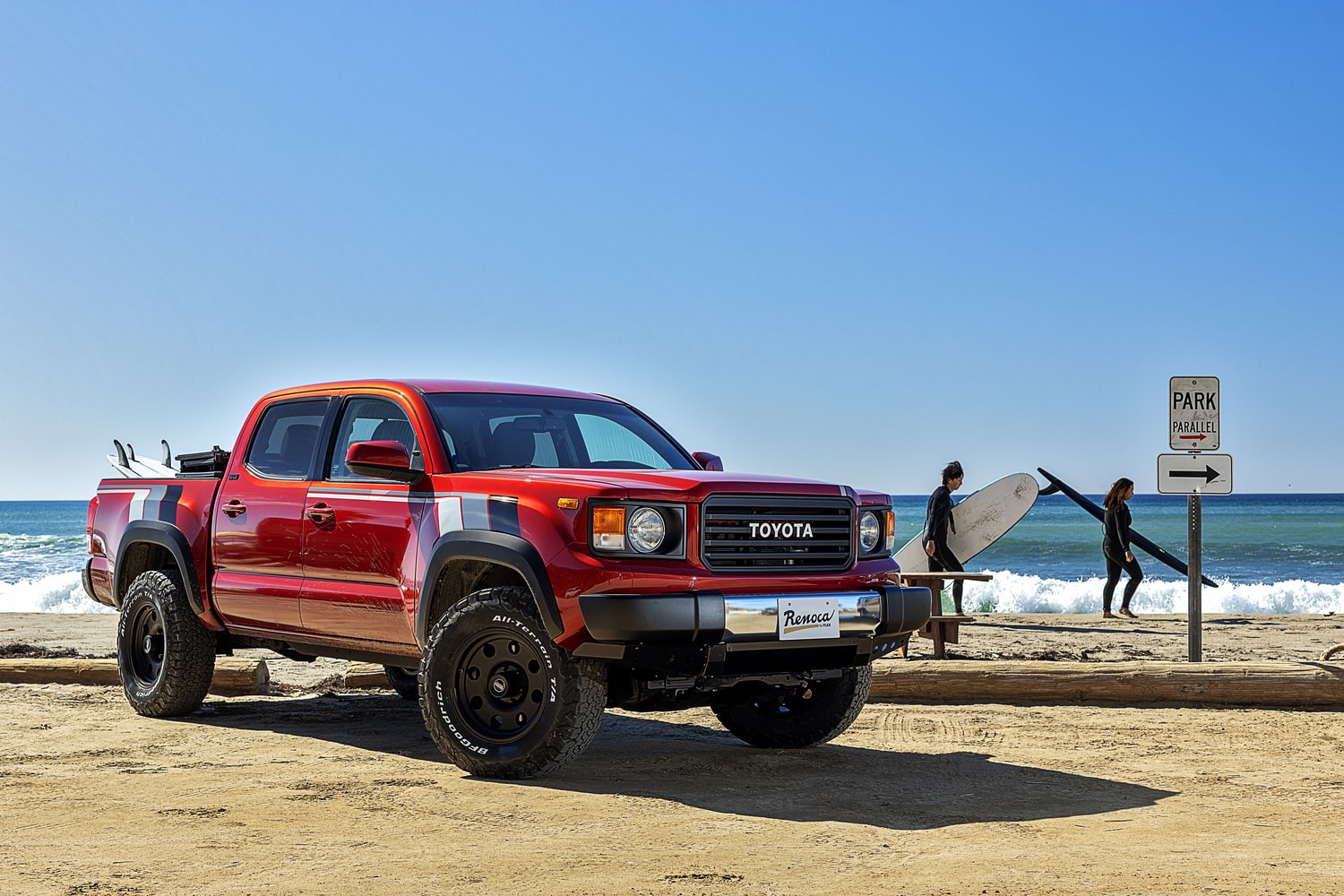
Purchase Your Renoca at FLEX Automotive
If you have dreams of owning a FJ60 but don’t know where to start, our team can help you design the Toyota you want to drive every day. Renoca vehicles may be created from Land Cruiser or Lexus models you already own, or you can have us use our import experience to find a base car for you. If you have any questions or need more information, contact us.
Looking for a JDM of your dream?
FLEX is one of the top Land Cruiser vendors in Japan, and our specialists will assist you to acquire your dream vehicles.





